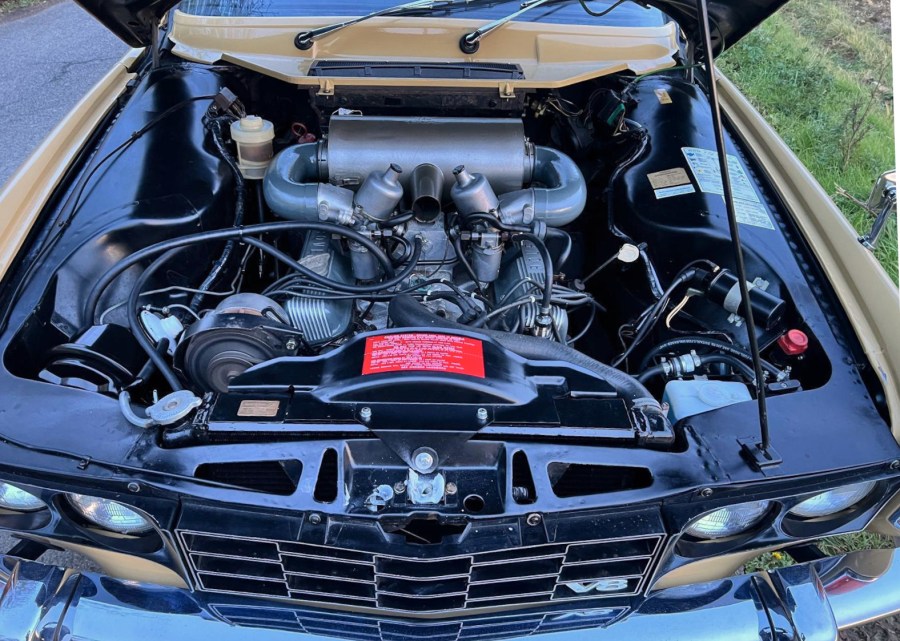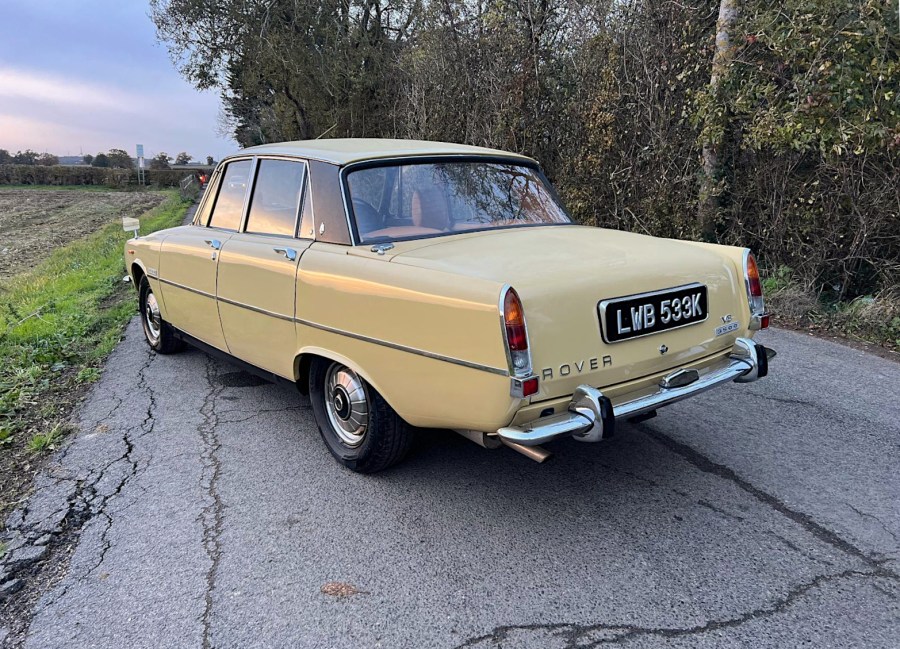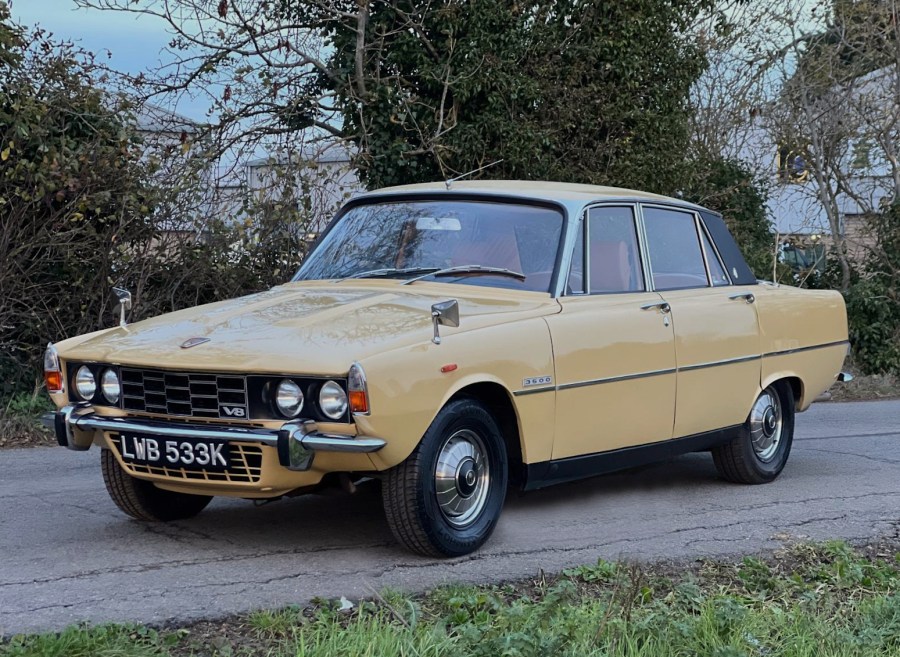We sample the Rover P6 3500, a car intended as a direct rival to the Triumph 2500 and other medium-sized saloons in the mid-1960s
Words: Paul Wager With thanks to: Hill Farm Automotive
Like so many automotive success stories from the Golf GTI to the BMW Touring, the V8-engined Rover P6 was one of those cars which wasn’t quite meant to happen.
Rover had acquired – and extensively re-engineered – the ex-Buick design as a replacement for the 3-litre straight-six powerplant in its bigger cars and the very modern P6 had been envisaged as a car for the class below, the emerging segment for compact yet sporting executive cars which would largely use four-cylinder engines.
The V8 had been intended for the larger P5 but the enthusiastic research into gas turbines by Rover during the 1950s provided a useful bonus. The development of turbines for road car use might ultimately have been a dead end but the team working on the P6 was encouraged to be as radical as possible and it was this which resulted in the car’s unusual front suspension layout, using a pivoting linkage to transfer the loads from the horizontal coil springs to the bulkhead.
This was in theory the strongest part of the car’s structure but the unusual layout also allowed space for avant garde powerplants including the gas turbine and a flat-four unit… and also the V8 which needed only revised manifolding and exhaust to slot straight in.
After acquiring the Buick engine, Rover spent much time revising it both to make it more suitable for European tastes and easier to manufacture and it was at this time that an imported V8 was fitted to a P6 prototype.

Management had been generally disinterested in the V8 engine, but after Rover’s MD William Martin-Hurst had tricked engineering chief Spen King into trying the V8-powered prototype he did at least have one influential ally and eventually the project was given the green light.
Launched in 1966, the V8 was originally marketed as the ‘Three Thousand Five’ and was offered only in automatic form before the manual version was offered from 1971, badged as 3500S – that S signifying not sports, but ‘synchromesh’.
It’s an automatic we have here, a 1971 example courtesy of Hill Farm Automotive near Northampton where we sampled it on a freezing winter day, something which brought home the unusual nature of the P6’s design.
Despite having its origins in the late 1950s, the P6 was a daringly radical design and really quite modern even by today’s standards, employing a bodyshell construction in which the unstressed outer panels were hung from a structural central section. In truth, this wasn’t a brand new idea as the concept had been successfully proved by the Citroën DS in 1955, but for a conservative brand like Rover it was a bold move.
The result was a car which was daringly modern at launch and still feels fresh in many ways half a century later. The door latches operate with a gratifyingly pre-British Leyland precision and David Bache’s signature interior style complete with its open plan shelf-style dashboard imparts an agreeable sense of order. Instead of a haphazard scattering of Lucas and Smiths switchgear, it’s obvious that the interior was designed as a single concept and in that sense it was ahead of its time.

A sub-zero day in the damp British winter is generally the point at which the dream and reality of classic car enjoyment start to part company but with the V8 fired up and woofling away, the heater proved effective enough to lift the winter gloom.
The combination of ’60s suspension, rear-drive V8 power and winter roads might sound like a recipe for disaster but in automatic form the 3500 is actually more refined cruiser than hot rod. The transmission is the British-built Borg Warner 35 which in common with standard practice at the time offers just three gears, but the added heft of the V8 neatly masks the lack of an extra ratio and makes progress notably less jerky than the four-cylinder cars.
Running a twin SU carburettors in European spec, the 3.5-litre V8 was good for 150bhp and perhaps more usefully, 201lb.ft torque and with the P6 weighing in at a whisker under 1300kg this provides very modern performance.
We weren’t about to treat a customer sales car to full-bore standing starts but the sideburned and flared Autocar road testers of the day managed to get the automatic car to 60mph in 10.5 seconds and on to a top speed of 115mph. The manual car by comparison smoked to 60 in just 9.1 seconds and topped out at 122mph.
The figures don’t tell the whole story though. By the standards of 1960s cars, the P6 feels remarkably lively even in automatic guise, to the point where it’s easily able to hold its own in modern traffic – something which in turn makes it a more enjoyable ownership proposition.
As for the rest of the driving experience, the De Dion rear end may have been an unusual layout for the time but road testers of the day were impressed by its behaviour. With its fixed-length driveshafts and sliding tube, the layout was designed to prevent lift-off oversteer by eliminating rear wheel camber changes and although that’s less of a consideration today now these cars are driven more sedately, the most noticeable characteristics are a degree of body roll matched by a compliant ride which handles today’s potholed roads well.
All in all, the combination of V8 power and capable handling makes the P6 an appealing classic and one which remains in many ways undervalued: it’s still possible to pick up a respectable, usable 3500 for as little as £5000 even if the manual car attracts a premium.
As an ownership proposition the P6 is also helped by exceptionally good parts support. Pretty much everything you might need for bodywork restoration is available, while the enduring popularity of the Rover V8 engine in various Land Rovers and TVRs means there’s no shortage of parts and expertise out there.
Ultimately it seems, the P6 has aged really very well: “a have your cake and eat it package” was how Motor summed up the 3500 back in 1968 and that rings true today, with very few classics matching the car’s affordability, driving manners and practicality.





